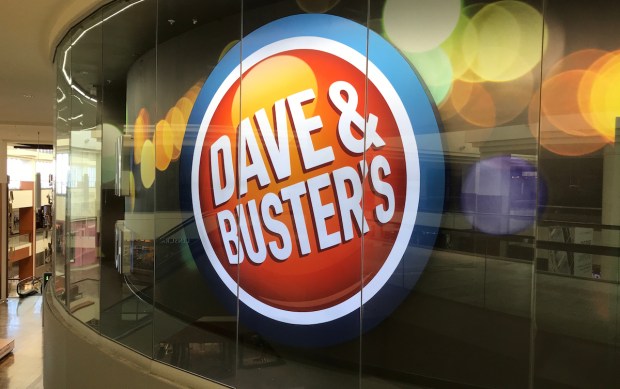
Dave & Buster’s is looking to embed mobile engagement into every part of the in-store experience, as full-service restaurants (FSRs) increasingly find ways to digitize the on-premise journey.
The restaurant and entertainment chain shared on a call with analysts Tuesday (Dec. 5) discussing its third-quarter 2023 earnings results that it is rethinking its stores to drive digital engagement throughout the customer’s time on site.
“We believe that there is an opportunity — and we’ve seen this in our remodeled store — to improve our digital guest engagement platform at the store level,” CEO Chris Morris said. “And so, [we’re] being very deliberate about how we migrate a guest through the entire guest journey and do it in a way to where the mobile app should enhance that guest journey.”
The company’s existing digital bets, such as its loyalty program, are paying off in terms of driving consumer engagement. Morris noted that the chain’s loyalty database, which has 5.4 million users, is yielding higher visit frequency and spending. Loyalty members visit over 50% more often than those who are not enrolled in the program, and they spend around 15% more on each trip than their nonmember counterparts.
“As we focus on enabling a better service model, a better guest experience, we believe that that will migrate more people into the mobile app, which will then improve our loyalty database platform,” Morris stated.
Historically, mobile technology has played a larger role in quick-service restaurants (QSRs) than in eateries that focus on the on-premise experience. According to data from the PYMNTS Intelligence study “Connected Dining: Consumers Like the Taste of Discount Meals,” 51% of consumers use at least one restaurant loyalty program, with 49% participating in these programs at QSRs and 34% at FSRs.
More FSR chains are adding loyalty programs. Take, for instance, Cracker Barrel’s November introduction of digital rewards.
Overall, FSRs are increasingly finding ways to integrate digital technologies to boost efficiency. According to data highlighted in the October edition of the Digital-First Banking Tracker® Series Report, “The Restaurant of the Future Is Open. Will Diners Bite,” FSRs anticipate that 27% of tasks will be automated by 2025.
Yet consumers are not convinced that in-restaurant technologies would improve their dining experiences — many believe just the opposite. A PYMNTS Intelligence survey of more than 2,200 U.S. consumers last year revealed that 37% agree that more technology inside restaurants means better customer service.
While consumers tend to dislike QR code menus, FSRs are finding other parts of the dining experience to use the technology in less obtrusive ways.
In an interview with PYMNTS posted in July, Suzie Tsai, who was then vice president of marketing at casual dining chain On the Border Mexican Grill & Cantina, explained that QR code payments contribute positively to efficiency and the customer experience.
“No longer do guests have to scan the QR code — if they want, they certainly can — … but we went back to the more traditional ways of providing a menu,” Tsai said at the time. “On the payment side, we continue to work through how to make making payments easier because so much of it has to do with the pacing and timing of service and giving the guests a short, easy, faster checkout experience.”